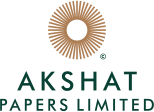Wire section
A uniform jet of a watery stock releases the wet-end of the paper machine from the headbox. Next, foils (short for hydrofoils) remove water and ensure that the fibres weave together in a tight mat.
The wire goes through suction boxes that vacuum out the water, leaving a soft mat of pulp that forms the paper sheet, also known as the paper web. In a couple of seconds, the water content drops, and there is no more wet sheen on the internet.

